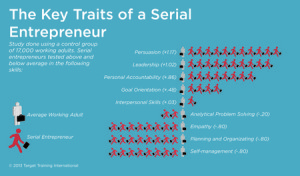In creating your company’s strategic plan, you’re familiar with three essential stages: Where are we now? Where are we going? How will we get there?
Guest Post by: Adam WongThe first two stages are undoubtedly completed with key stakeholders hunkered down in your company’s conference room. For “Where are we now?” you connect your mission statement to your core values, then begin your SWOT analysis.
 As you move into “Where are we going,” you are forced to identify your sustainable competitive advantage — what makes you unique — and from that births a vision statement that vividly idealizes your desired outcome. You now know who you are and what you want, but how are you going to get there and outshine your competition along the way?
As you move into “Where are we going,” you are forced to identify your sustainable competitive advantage — what makes you unique — and from that births a vision statement that vividly idealizes your desired outcome. You now know who you are and what you want, but how are you going to get there and outshine your competition along the way?
It’s at the third stage of a strategic plan where specific activities must be identified to help you achieve your vision, and these activities are entrenched in the people who make up your organization. “How will we get there?” could be interchanged with “Who is going to take us there?” The people who make up your organization are the ones actively working within your finances, your customers and your operations. So, if you don’t have the right people in the positions you’ll need, how are you going to achieve your strategic goals and realize your vision?
Clearly defined positions are crucial for the success of all personnel, and this is where TTI Success Insights’ job benchmarking assessments make it easy for you to identify qualities in your current employees and desired outcomes in their unique positions.
With a product such as TriMetrix®, you can benchmark each position to identify the behaviors, motivators, acumen and competencies required for success in that position. Then, you can match the employee to his or her job and straightforwardly identify the gaps between the demands of the job and your employee’s capacity to be successful in his or her position. Once you have the right people in place, you’ll be able to outshine your competition simply by fulfilling your strategic plan.
Read our success stories about other companies around the world that have been using TTI Success Insights employment assessments to outshine their competition.
ABOUT THE AUTHOR
Adam Wong is Director of Network Development for TTI Success Insights, driving excellence through careful thought and attention to detail, consistently anticipating the needs of all customers. He serves as an integral member of the product development team, creating new products and improving existing tools to better support the company. @TTISI_Adam

 But a strong business must start with a strong team. A team inspired by a common goal and a crystal clear purpose.
But a strong business must start with a strong team. A team inspired by a common goal and a crystal clear purpose. Consider the senior leadership of your organization. Has your company made plans for the transition of these individuals? Succession planning is least effective when it is developed on an as-needed basis (in fact, it really should be called “crisis management” in that case); rather, succession planning should be ingrained in your complete talent management plan, making it a part of the way you do business.
Consider the senior leadership of your organization. Has your company made plans for the transition of these individuals? Succession planning is least effective when it is developed on an as-needed basis (in fact, it really should be called “crisis management” in that case); rather, succession planning should be ingrained in your complete talent management plan, making it a part of the way you do business.
Recent Comments